Home > Charging stations > Professionals and companies > Installing recharging points in Airbnb
Install charging stations and make your Airbnb customers' stay easier
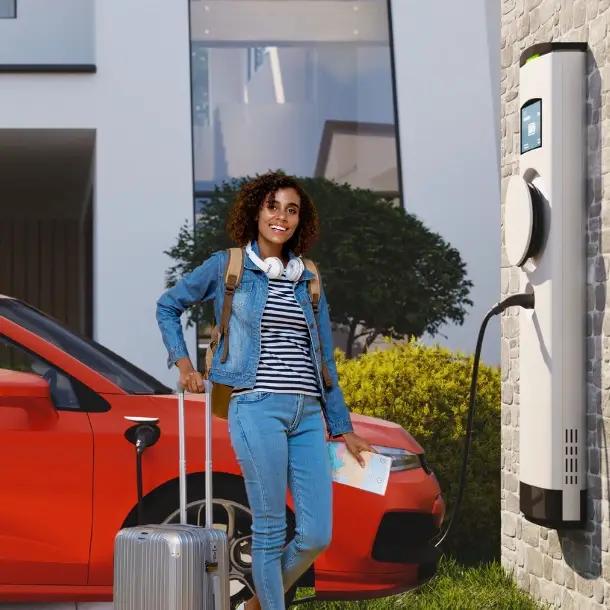
Find and install the charging point for your home with Beev.
Beev offers you support from A to Z, completely free of charge, from an expert who follows your project.

With Beev, it's easy to install a charging point in your company!
Advantages of installing charging points for your Airbnb
Attract eco-responsible travellers
Improve passenger comfort
Offering guests the option of recharging their vehicle directly on site simplifies their lives. They won't have to search for a public charging point, which will make their stay more convenient and enjoyable, contributing to better reviews and increased loyalty.
Add value to your eco-friendly home
Installing charging points shows that you are at the cutting edge of technology and committed to an environmentally-friendly approach. It reinforces the modern, responsible image of your property, while increasing its perceived value and attracting environmentally conscious customers.
What happens when you move into your Airbnb?
We've created a 4-step process to help you complete your electric vehicle charging point installation project:

1. Understanding your needs
A dedicated expert will analyse your employees' recharging needs and advise you on the appropriate charging point, financing arrangements and installation process.

2. Tailor-made offer
The expert will contact your employees to draw up an offer tailored to their situation, in line with your company's regulations and standards.
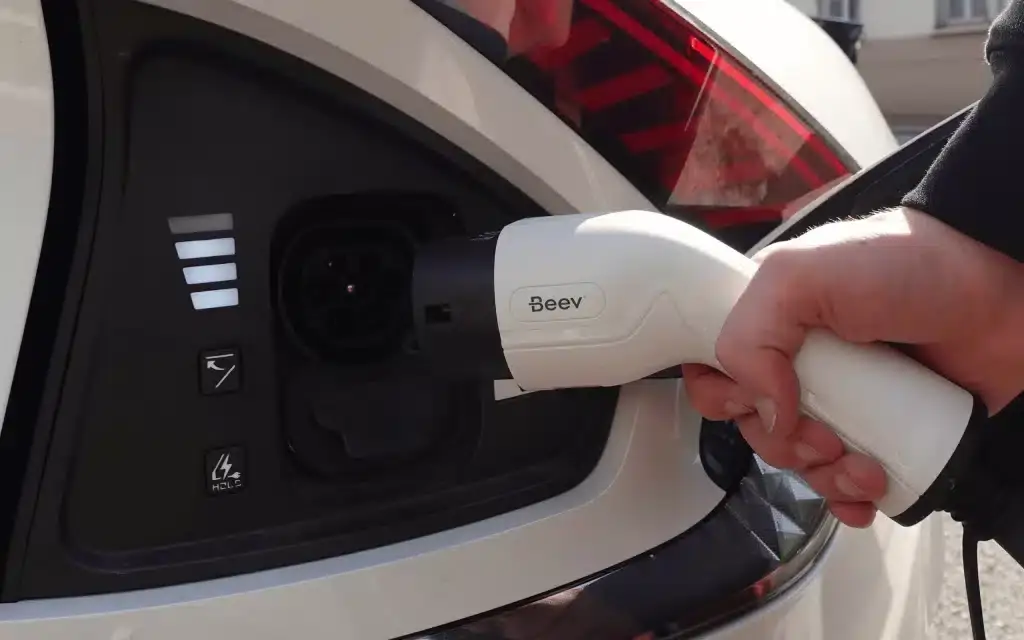
3. Installation of charging stations
After validation and payment, the employee will receive the terminal at home. A qualified IRVE installer will organise the installation of the terminal.
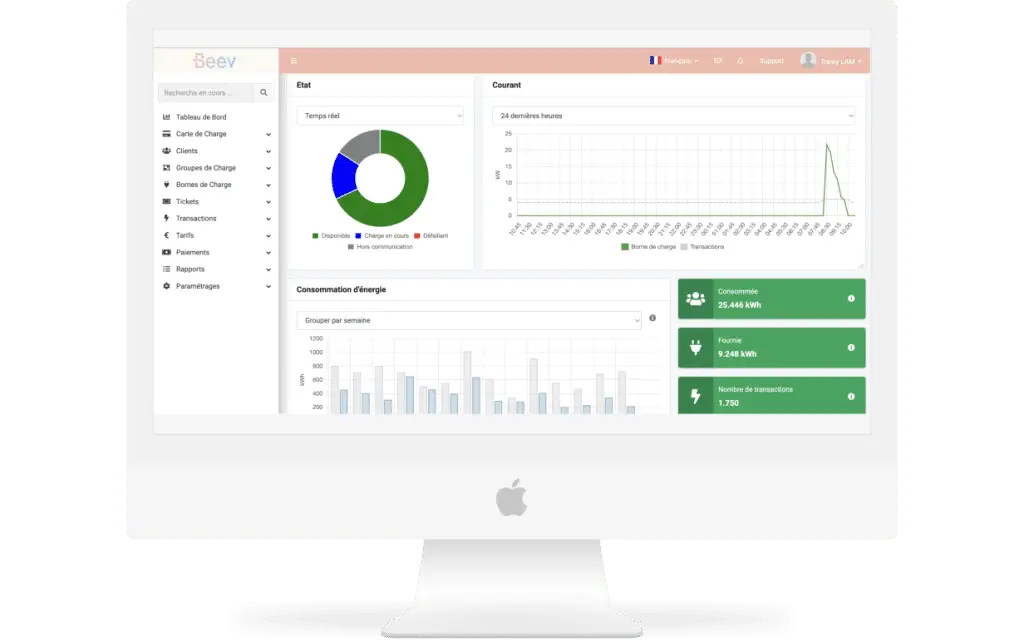
4. Terminal management and control
Depending on the option you choose, we will train you in our tools for monitoring the consumption of top-ups by your employees.
What benefits and taxes apply to Airbnb charging points?
Deductible VAT : the company can reclaim VAT on the purchase and installation of the terminal.
Amortisation: the cost of the bollard can be amortised over several years.
Subsidies: local or national grants may be available for the installation of charging points.
For the employee :
Exemption from tax and social security contributions : the benefit in kind linked to the provision of a recharging point is exempt from tax and social security contributions up to 50%, capped at €1,800 per year.
Reduced fuel costs: employees can recharge their electric vehicles at home at a lower cost than petrol or diesel.
Airbnb charging points: how to choose the right ones?
To find the right charging point, you'll need to identify what your employees really need. Here are a few criteria to help you make your choice.
Journeys
One of the most important criteria is the use made of the electric vehicle by the employee.
If they use their electric vehicle mainly for short everyday journeys, such as :
- Drive the few kilometres that separate it from your premises.
- Everyday travel.
In that case, a simple 7.4 kW charging point will do the trick.
Another criterion to take into account is the maximum current that the electric vehicle can receive!
Not all electric vehicles accept the same charging power. So don't get a charging point that provides a higher charging power than the vehicle's capacity.
The most popular charging points for employees and private customers are those delivering between 7.4 and 11 kW. For 11 kW charging points, the home must provide a three-phase power supply, which is not the norm. Not all vehicles are compatible, but most of the time there is an option for a charging point offering 11 kW, which is suitable for all types of user.
Protection standards
Depending on the space available for the charging point, you'll need one that meets a number of criteria and protection standards.
This is for your staff, especially if they want to install an outdoor charging point. Obviously, when we talk about electronic devices and the outdoors, we inevitably think of the risks associated with rain. As we all know, water and electricity don't mix. That's why it's so important to get a charging point that meets safety standards guaranteeing sufficient protection against heavy rain and impacts. To install an outdoor recharging point, it must at least meet the following standards IK08 and IP54.
Connectivity
Connectivity is an increasingly important part of our daily lives.
Connected charging stations enable their owners to better manage and keep an eye on recharging at all times, thanks to the many functions they offer.
Here's what these terminals can do for you:
- Configure the charging point so that it only allows your vehicle to be charged during off-peak hours, when electricity is cheaper.
- Remote charging point activation/deactivation.
- Block foreign users from recharging, thanks in particular to RFID functionalities.
- Monitor electricity consumption with a detailed consumption calculation.
To find out more, take a look at our article on top 10 best charging points
Charging points with load shedding
Le load shedding is an option available on certain terminals. It regulates the power drawn by the terminal according to the power available on your network.
Among other things, it becomes necessary on certain installations where the subscribed power is insufficient to support the consumption of the terminal. To avoid any problems with your employee's bollard, we strongly recommend that you add this option so that there are no problems with their electrical installation.
Consult our catalogue of recharging stations
Installing with Beev: guaranteed simplicity and benefits
On company websites
Turnkey installation
✓ Audit
✓ Technical feasibility study
✓ ROI
✓ Support
✓ Diagnosis
✓ Maintenance and repairs
Options
✓ Bollard purchase and rental offers
✓ Cladding in your corporate colours
✓ Proposals for additional equipment
At employees' homes
Installation in 10 working days
✓ Remote estimation
✓ Connected and unconnected terminals
✓ Operations throughout mainland France
and Benelux
Options
✓ Bollard purchase and rental offers
✓ Full guarantee in the form of a monthly subscription
Our charging stations are suitable for all types of business
Hotels
Offer your customers recharging points and guarantee a more comfortable stay

Catering
Distinguish your restaurant by offering your customers charging points during their meal

Transport
Optimise your fleet with high-performance charging stations and ensure your logistics efficiency
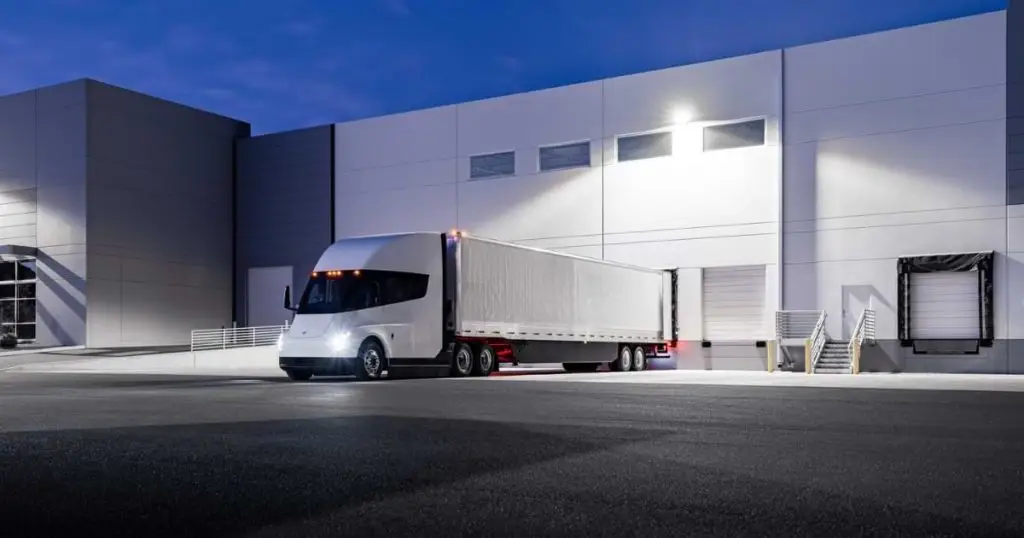
Local authorities
Take your local authority into the future with public charging points
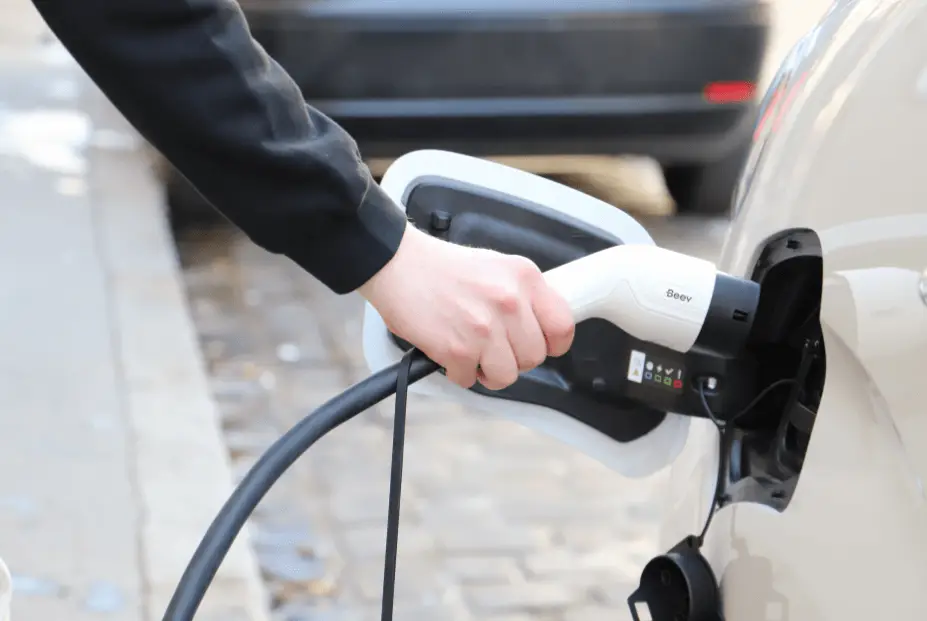
Campsite
Modernise your campsite and attract environmentally conscious nomadic customers

Public institutions
Take your public institution into the future with public charging stations

Luxury goods industry
Attract affluent customers who care about the environment.
Offer an exclusive, cutting-edge service

Visit our charging stations
Get your free quote as soon as possible
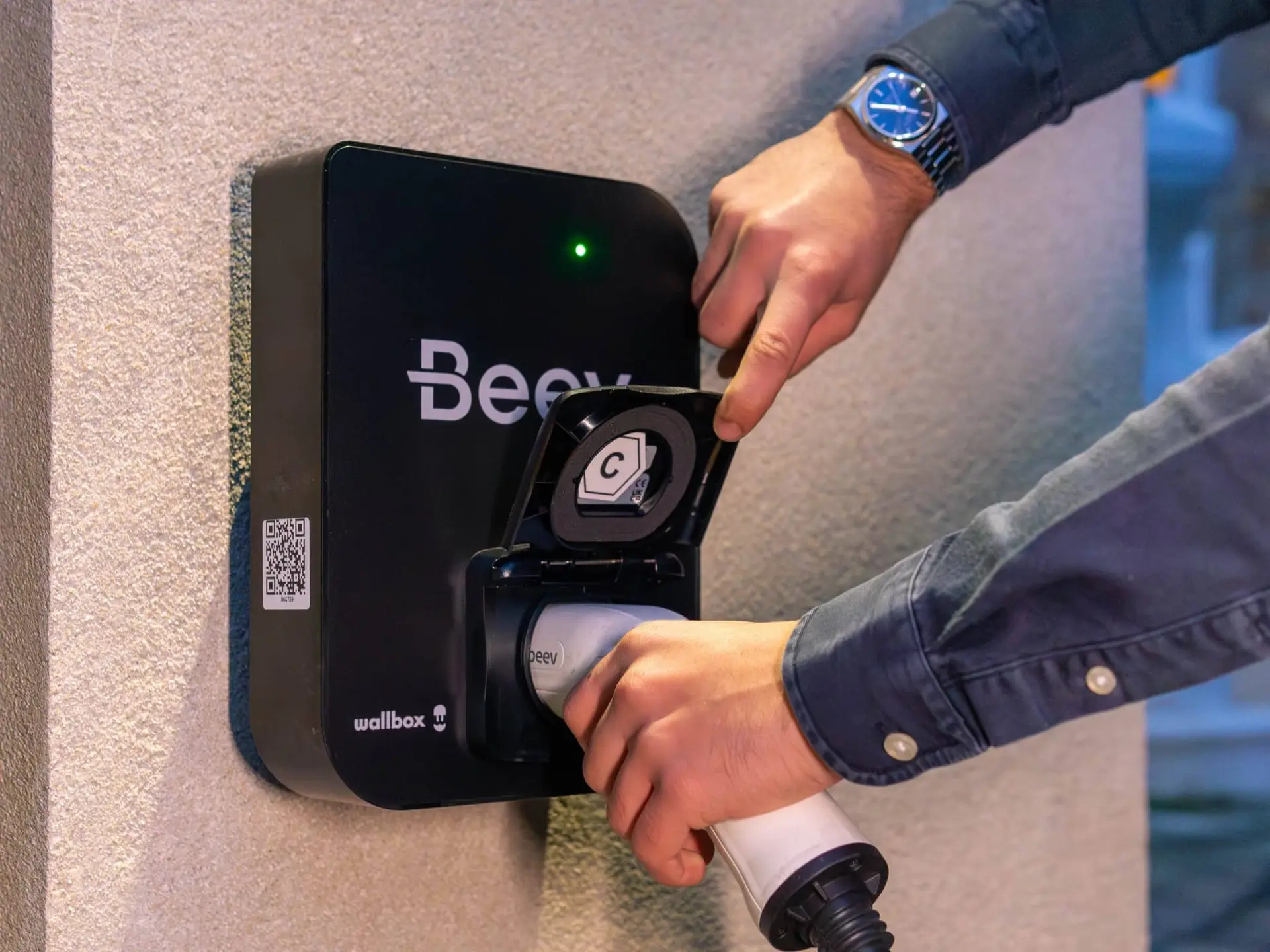
Monday to Friday
9am - 12.30pm - 2pm - 7pm
Join the clean mobility movement






























Make your request now and our experts will contact you within the hour!
Our certifications and standards







See also our advice on installing a charging point in your town or region.
A useful resource for professionals wishing to install kiosks
Do you have a question about our services? Perhaps we already answered already answered it!
The installation of the bollard must meet an observed need. It will be necessary to study :
- how the vehicle will be used to adapt the choice of terminal
- the employee's home to avoid opting for a charging point that is incompatible with the electrical installation.
- find out whether your employee's installation supplies single-phase or three-phase electricity
The installation process will therefore involve four stages:
- Choose where to install the bollard (indoors or outdoors), depending on the property.
- Choose the type of charging point to be installed: normal or accelerated charging point (7.4 to 22 kW) depending on requirements and the power supplied by the home (single-phase or three-phase).
- Installation of the terminal by a IRVE-qualified service providerto access ADVENIR assistance if the installation is jointly owned.
- Commissioning the terminal
The help ADVENIRwhich stands for "Aide au Développement des Véhicules Électriques grâce à de Nouvelles Infrastructures de Recharge" (Aid for the Development of Electric Vehicles through New Charging Infrastructures) is a grant designed to finance part of the work involved in installing charging stations.
The ADVENIR subsidy covers the cost of supplies and installation of individual charging infrastructure in apartment blocks, up to a maximum of €960, for up to 50 %. It's important to remember that to qualify for the ADVENIR grant, you'll need to work with an installer who has been awarded the IRVE label and meets a set of standard-compliant specifications.
To find out more, click here:
A typical installation takes between 2 and 4 hours, depending on the electrical configuration of your property. A preliminary assessment enables us to anticipate specific needs.
To install a charging point on an Airbnb, avoid choosing an unsuitable one: opt for a universal level 2 model. Make sure your electrical installation can handle the load by carrying out a preliminary assessment. Call in a certified electrician to ensure compliance and safety. Place the bollard in an easily accessible location, close to the car park. Consider integrating a management or payment system if you wish to charge for recharging. Inform your tenants with a clear user guide.
The price of a charging point depends on a number of factors, including its use, power, installation work and location.
To give you an idea of the price, the Wallbox Copper SB is the most popular bollard, costing €948 incl. VAT. This is a connected bollard, delivering between 1.4 and 22 kW of power, and is compatible with both single-phase and three-phase networks. It also complies with IK08 and IP55 standards, making it suitable for outdoor installation.
Installing a charging point will cost you an average of between €1,300 and €2,000 for those transmitting 7.4 and 22 kWh. This price does not include the cost of the charging point itself, which is around €1,000.




























